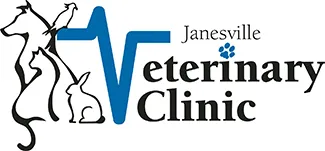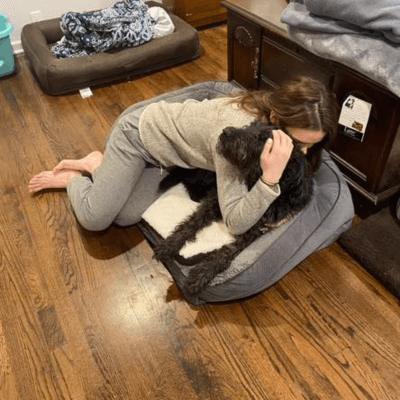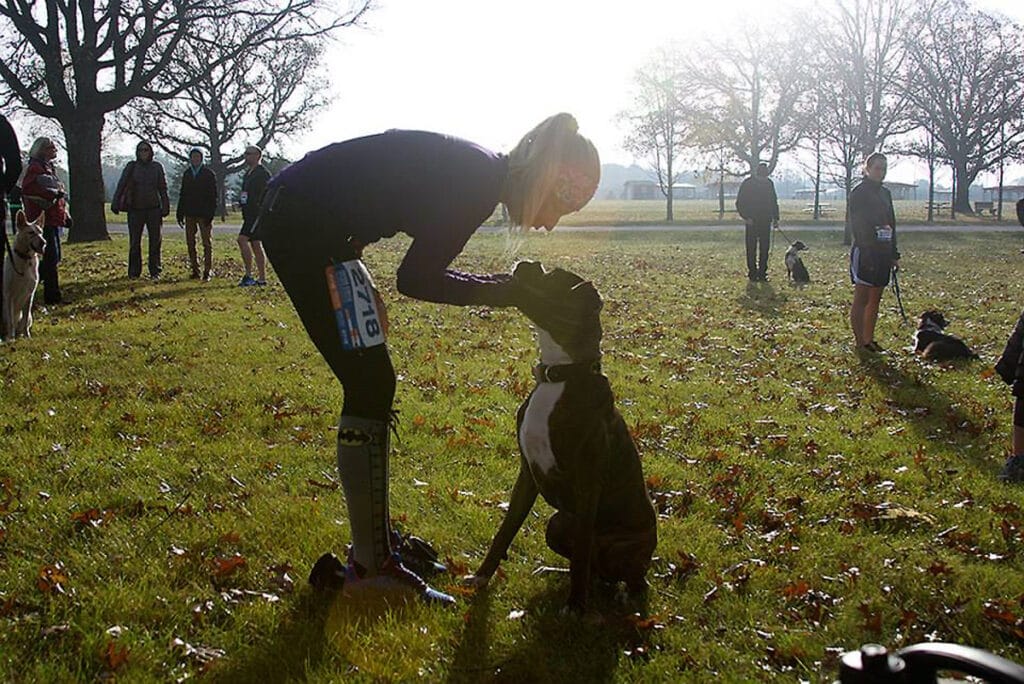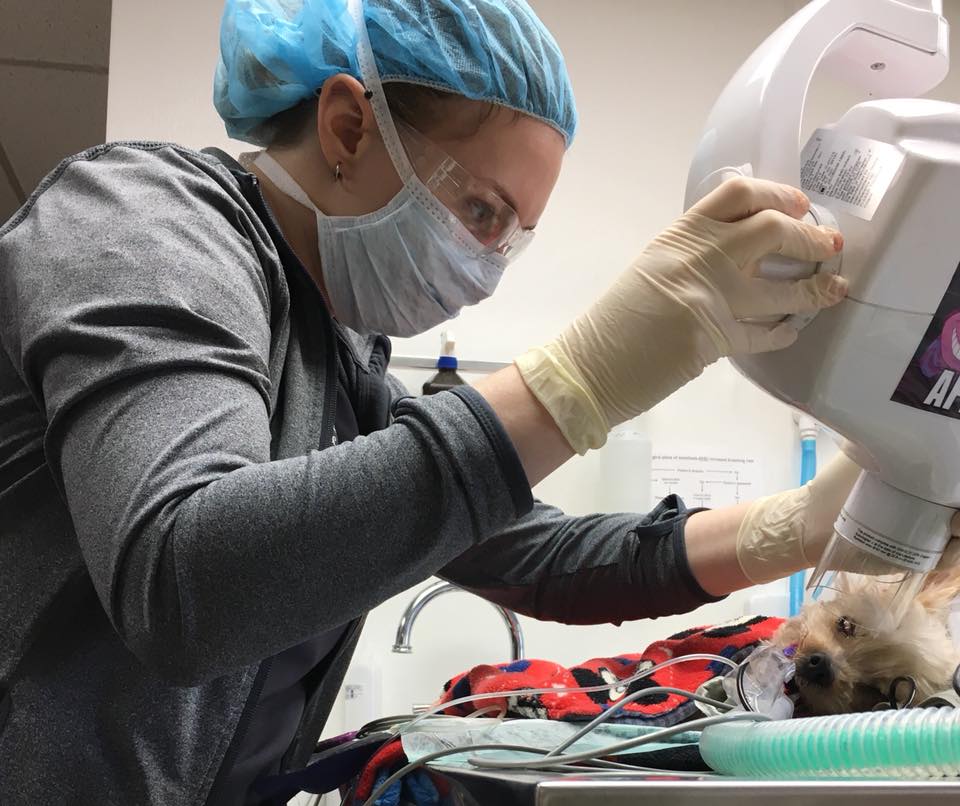As part of our AAHA accreditation, The Janesville Veterinary Clinic adheres to strict guidelines to ensure the best possible dental care for your pet, including the use of anesthesia.
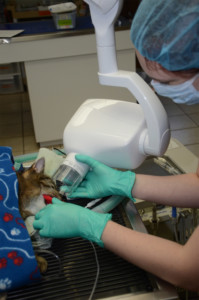
According to the American Veterinary Medical Association, 80 percent of dogs and 70 percent of cats have some form of dental disease by age 3. Dental disease can lead to painful oral infections, tooth loss, problems eating and bad breath. There is also extensive medical literature that confirms a correlation between oral disease and systemic diseases that can affect your pet’s vital organs, including the heart, liver, and kidneys.
Why Anesthesia
All pets, old or young, need to be anesthetized for their teeth to be cleaned, charted, and x-rayed properly and safely. Because a professional dental cleaning requires the removal of plaque and tartar, above and below the gumline, we need to have your pet’s mouth open and unmoving to perform the procedure safely and thoroughly.
Dental cleanings that are done without an anesthetic may make your pet’s teeth look clean but will not produce a healthier mouth. Without anesthesia, it is impossible to clean the inside surfaces of the teeth or under the gums where periodontal disease develops. Without the use of the correct instruments and procedures, such as polishing tooth surfaces, an environment will be created where plaque and tartar will develop more rapidly.
“Removal of dental tartar on the visible surfaces of the teeth has little effect on a pet’s health, and provides a false sense of accomplishment,” says the American Veterinary Dental College (AVDC) in a position statement opposing anesthesia-free cleanings.
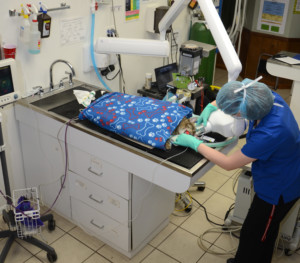
How Pet Dentistry Differs From People Dentistry
Pets, like people, need routine professional dental care in order to maintain a healthy and pain-free mouth and to prevent secondary systemic diseases. Our pets are unable to comprehend a professional dental cleaning. If people are frightened by the sounds and the smells in a dental operatory, imagine the feelings of a beloved pet.
It’s unreasonable to ask a cat or dog to undergo the necessary steps: having teeth charted by probing and examining each tooth individually, having the gumlines cleaned, and having their mouths open and still for x-ray films. Then there is the water and the suction and the polishing. Doing this to a dog or cat with a healthy mouth would be challenging, so just imagine how difficult it would be if there were painful broken teeth, abscesses or tooth resorptions.
Type of Anesthesia
For safety and comfort, your pet will need to be under general anesthesia, where both an inhalant gas and oxygen are being administered. As an AAHA-accredited hospital, every dental patient is intubated using a properly placed breathing tube during general anesthesia, which protects the trachea and prevents aspiration of water and oral debris. We also have a state of the art “warming device” to keep your pet comfortable and monitor his/her body temperature during the procedure.
As we closely observe the AAHA Dental Care Guidelines for Dogs and Cats, we continuously monitor your pet while he or she is under anesthesia. A trained veterinary technician will monitor your pet from the time anesthesia begins until he/she is fully awake .
Diagnosis
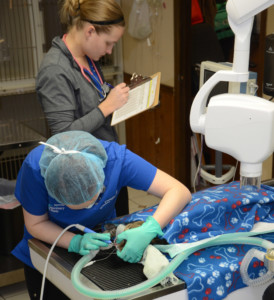
An awake oral exam will be performed on your pet by your veterinarian to design a preliminary diagnostic plan. It is not until your pet is anesthetized, however, that a complete and thorough evaluation can be accomplished. This includes a tooth-by-tooth visual exam, probing and a radiographic exam to determine a more specific treatment plan.
Is Anesthesia Safe?
Although there is always some risk when using an anesthetic, it is much safer than in the past; the risks are controlled thanks to new, safer anesthetic drugs, careful dosing and administration, and constant monitoring of pets during and after anesthesia.
For your pet’s safety, we run preanesthetic blood tests and tailor the anesthesia plan based on those results and other factors such as your pet’s age, weight and overall health.
Your Pet’s Comfort
In addition to all the guidelines we go above and beyond to follow, we are also committed to your pet’s comfort during pet cleanings and procedures. In adherence with AAHA recommendations, our dental procedures are also accompanied by pain assessment and appropriate pain treatment.
